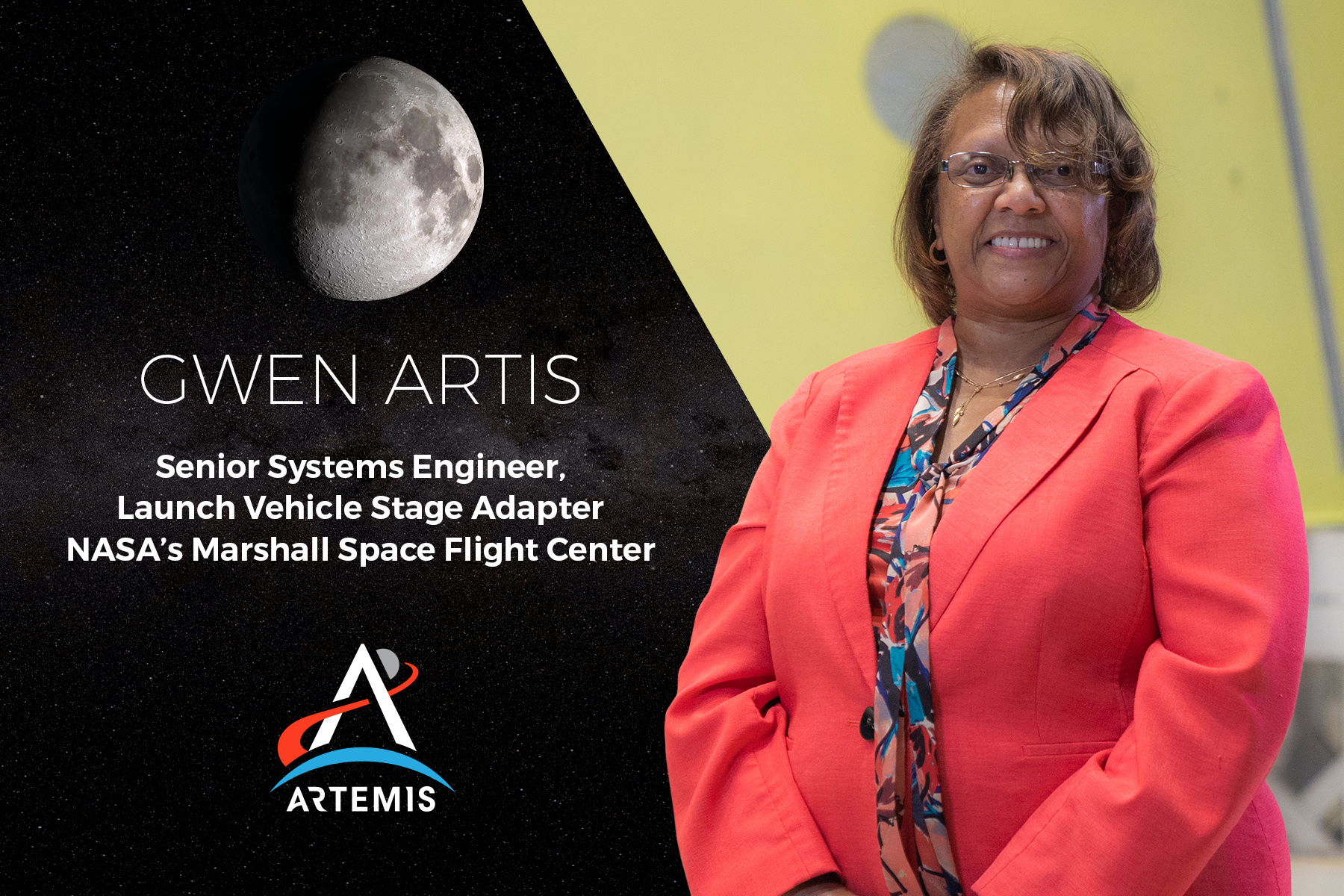Although she was born and raised in the Rocket City of Huntsville, Alabama, math, science and space exploration weren’t the usual topics of conversation around Gwen Artis’ family dinner table.
“I grew up on a farm before moving into the city at the age of twelve. My first two years of education were spent in segregated schools,” said Artis. “During that time a little girl who looked like me wasn’t encouraged to pursue math and science. But thankfully, things changed. By the time I got to high school, I had excelled in math and science, and realized space exploration was amazing.”
Today, Artis is a senior systems engineer with Jacobs Space Exploration Group who assists with management and oversight of the production of the Space Launch System rocket’s launch vehicle stage adapter.
The adapter, manufactured in the Advanced Weld Facility at NASA’s Marshall Space Flight Center in Huntsville, plays an integral role in connecting the rocket’s core stage with the interim cryogenic propulsion stage that will help propel the Orion spacecraft to the Moon. Artis’ team makes this piece of hardware with a modern manufacturing technique called self-reacting friction stir welding. The 30-foot-tall, cone-shaped adapter helps protect the avionics during launch and ascent and houses the RL10 engine that powers the interim cryogenic propulsion stage. On the ground, it allows crews to access the upper stage during launch preparations at NASA’s Kennedy Space Center in Florida.
Artis started her career at NASA as one of the first high-school summer interns at Marshall. Her mentor and valuable hands-on experience inspired her to earn a Bachelor of Science in Engineering at the University Alabama in Huntsville, while working as a co-op student at Marshall. Over the course of her 34-year career at NASA, Artis has worked on a variety of programs including Spacelab, the Chandra X-Ray Observatory, In-Space Propulsion and SERVIR, a joint endeavor with the United States Agency for International Development that delivers tremendous benefits by working with other countries to help them use data from NASA’s Earth observations satellites.
“Not everyone who works at NASA gets to work on hardware that will fly to space. I feel extremely fortunate to be a part of this remarkable endeavor of sending astronauts to the Moon. In fact, I feel like the launch vehicle stage adapter is my baby! And I can’t wait to see my baby fly!”
Check out some of our other I am Artemis features.
Image Credit: NASA

























